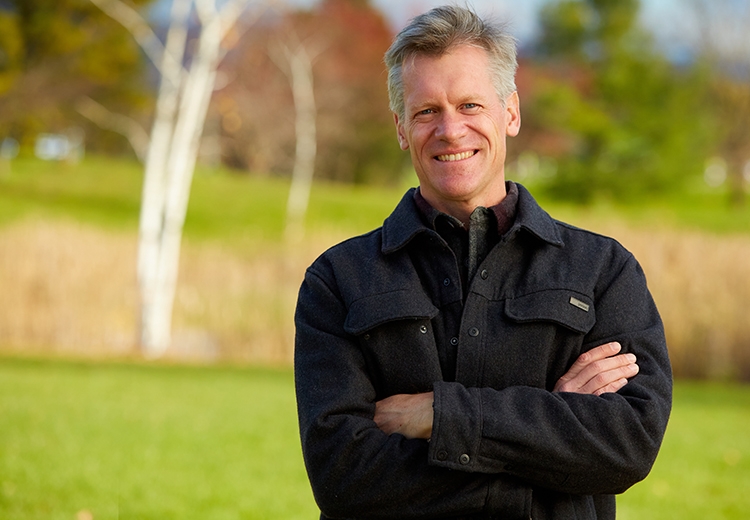Working for People—and the Planet

A summer internship at the Vermont Natural Resources Council helped to launch Terry Kellogg ’94 on a career that has changed how companies do business.
For nearly three decades, Terry Kellogg ’94 has worked and studied at the intersection of business and the environment. His focus areas have included forestry, mining, renewable energy and sustainable business practices writ large at the Timberland Company, 1% for the Planet, and now Helios Climate Ventures.
An internship at the Vermont Natural Resources Council (VNRC), funded by the Ronald H. Brown ’62 Internship Program, set him on that path, Terry says. “I can draw a clear arc from that summer in 1994 to each of the career steps I took from there through many facets of the business and environmental landscape.”
Kellogg spent the summer creating GIS maps of timber harvesting practices in the Northeast Kingdom of Vermont following a significant land ownership change in the region. “To this day, I can hardly believe that I had the chance to dive into something that big during a summer internship,” Kellogg says. The stark representation in those maps changed the conversation about forest management practices in Vermont and beyond.”
As director of environmental stewardship at Timberland, Terry reduced the company’s carbon footprint, adopted widespread use of water-based adhesives, and launched programs in green building and organic cotton. He also created systems for rating and managing the impact of materials, products and suppliers, initiatives that placed Timberland at the forefront of the field.
As CEO of Patagonia’s 1% for the Planet, Terry grew the organization from a concept with 92 members to a global network with 1,400 companies in 44 nations that funneled in excess of $100MM to environmental causes.
As cofounder and managing director of Helios, Terry looks for opportunities that will reshape industries, sustain planetary health, and offer outsized returns to investors. Helios invests in climate-friendly technologies, focusing on a small number of early-stage, high-impact, high-return investment opportunities. The firm has raised five funds since 2019 for a total of $38.4 million and invested in several early-stage energy storage, solar, and artificial technology companies and currently has $300 million in assets under management.
What did your internship entail?
I helped to create GIS maps of timber harvesting practices in the Northeast Kingdom of Vermont following a significant land ownership change in the region. The work required me to spend time in a Forest Service office in Northern Vermont tracing orthographic photographs, then “ground truthing” the images. We also partnered with an organization called Light Hawk to perform aerial flyovers of the land, using a float plane and taking off from a tiny lake in the middle of the woods. I had weekly progress check-ins at the VNRC offices in Montpelier but the work was largely mine to execute.
Did you gain specific skills that you carried forward? What were the biggest personal or professional takeaways?
There was no road map for doing this kind of thing at the time so we had to figure it out as we went. I got used to the idea that work in general must be that way: understand the objective and then just figure out a way to get there. The stakes were high and there was a lot of autonomy. I suppose the experience helped me to become accustomed to such things.
What impact did this experience have on your future personal or professional choices?
It was formative to be sure. I can draw a clear arc from that summer to each of the career steps I took from there through many facets of the business and environment landscape. Albeit less field-oriented, all of my work has focused on the interplay between people and planet.
Even to this day, the scope and impact of the project feels big for a summer internship. The stark representation in those maps changed the conversation about forest management practices in Vermont. I also think fondly of the many legendary figures in conservation that were connected to VNRC at the time. Two young directors went on to lead major New England conservation groups. One sidebar trip for me entailed a long detour to help a beloved senior staff member plug in a new computer and install a dial-up modem at his house for the first time!

